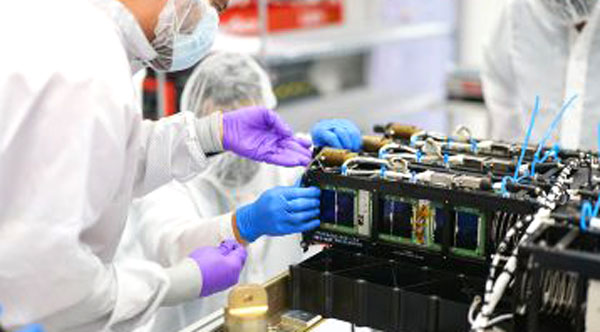UCF Satellite Launches Successfully into Space from Virgin Orbit’s LauncherOne Rocket
By University of Central Florida // January 21, 2021
satellite’s mission is to capture video of small particles colliding in microgravity

ORLANDO, FLORIDA – University of Central Florida planetary science continues its ascent as a leader in space research with another high-profile flight, this time aboard Virgin Orbit’s LauncherOne, which was blasted into orbit last Sunday from the company’s 747 carrier aircraft, Cosmic Girl.
The launch took place at 10:50 a.m. at the Mojave Air and Space Port in California.
The research sent into space is a small satellite called Q-PACE, or CubeSat Particle Aggregation and Collision Experiment. It was launched along with eight other CubeSat missions, all selected by NASA.
This is LauncherOne’s second flight and the first to carry its customers’ satellites.
Q-PACE’s mission is to capture video of small particles colliding in microgravity, which will help scientists understand the earliest stages of planet formation.
Q-PACE is a rectangular satellite about a foot long with a width and height of about four inches.
A test chamber inside contains particles of various sizes, shapes, and compositions, including a collection of small pieces of meteorites known as chondrules.
When in orbit, the test chamber will be shaken at different speeds and directions to cause the particles to collide.

Different particles will be introduced over several phases, starting with large spherical particles and ending with aggregates of small dust particles and chondrules.
These collisions will be recorded with a high-speed camera, and the recordings will be transmitted to ground stations at UCF and the University of Arkansas for analysis.
The microgravity of low-Earth orbit will allow the particles to collide at slow speeds and will allow researchers to study how the particles bounce, stick and begin to aggregate.
This type of aggregation is a first step toward planet formation and is also seen taking place in the rings of Saturn and other planets.
The Q-PACE mission is part of NASA’s Educational Launch of Nanosatellites program. The mission was selected by NASA in 2015 for funding through its Small Innovative Missions for Planetary Exploration program.
Nearly all of the CubeSat missions onboard LauncherOne on Sunday were designed, built, and tested by universities across the U.S., including Brigham Young University, the University of Michigan, and the University of Louisiana at Lafayette.
Sunday’s flight continues a series of high-profile flights for UCF space research.
Colwell is a Pegasus Professor of physics and assistant director of the Florida Space Institute.
He received his doctorate in astrophysical, planetary, and atmospheric sciences from the University of Colorado at Boulder and joined UCF’s Department of Physics, part of UCF’s College of Sciences, in 2006.
Brisset earned her doctoral degree in physics from the Technical University of Braunschweig and joined UCF in 2016.
Dove received her doctorate in astrophysical and planetary science from the University of Colorado at Boulder and joined UCF in 2012.














